A question that comes up now and then is, “Why were most lighthouses built round (conical or cylindrical) rather than square?” Here are some thoughts on that subject.
The U.S. Lighthouse Society held a virtual tour event the other day, and the “why are most lighthouse round” question was asked by one of the participants. Someone stated that round is the most efficient shape structurally.
Francis Gene Amrhein contacted us after the event and said, “Structurally, a round building is stronger against forces in all directions. Many stone arches were built with no mortar; the compression forces held the interlocking stones together. Additionally, wind against a flat surface exerts a larger overturning force on the structure. Note that most high chimneys are also round. Also, on a square or rectangular structure the wind creates eddies at the corners, which further stresses the structure.”
Round towers:
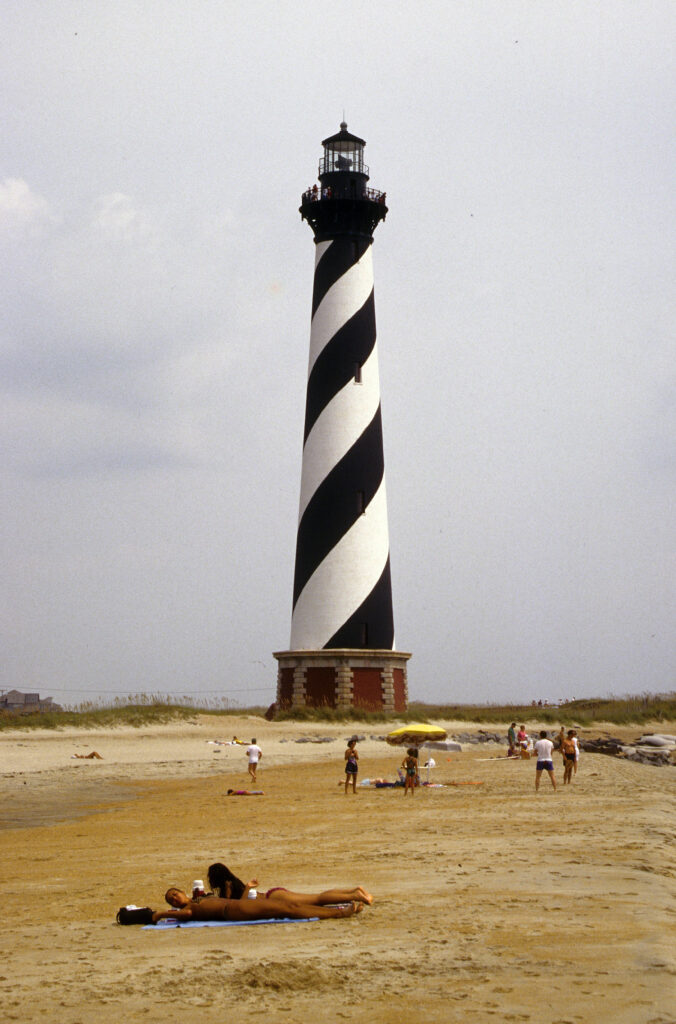
Cape Hatteras, North Carolina 
Halfway Rock, Maine 
Boston, Massachusetts
In his blog, architect Bill Whitaker wrote the following: “The circle is considered one of the strongest shapes because stress is evenly distributed along the arc instead of concentrating it at one point. The interconnected points relieve it of upward pressure and give it lateral force.”
Inhabit.com confirms these ideas and adds more: “The oldest forms of indigenous shelter were often round. Think of the Southwest American hogan, the Mongolian yurt, the North American teepee, and the Greek temenos. Why did our ancestors choose to build round? Because an ovoid shape — like that of eggs, the earth, tree trunks and stones — is what they saw reflected in their natural environment and, as usual, Mother Nature knows best. . . . Wind and tsunami waves move naturally around a round building rather than getting caught at and potentially ripping off corners. . . . Round buildings use less wall, floor, and roof materials to enclose the same square footage as a rectangular structure. Between 15 and 20 percent less material is needed to create the same square-foot building compared to a rectangular design. This creates the possibility for a smaller eco-footprint and more space for less cost.”On Quora.com, Octavia Leigh points out the following, regarding the use of round towers on castles: “A circle, or arch, is one of the strongest architectural shapes – there are no corners. . . . This means that the towers can see in all directions.” This idea can be applied to lighthouses. A keeper or other person standing on the gallery (catwalk) of a round lighthouse has a wider view than he would from a square tower.
But why were many lighthouses built square instead of round, especially beginning in the later 19th century? The simple answer seems to be that the construction of square towers was simpler and thus less expensive, in spite of the fact that a square design meant more building materials. A square tower could use more traditional stairways instead of more expensive spiral stairways (although there are some square towers with spiral stairways inside).
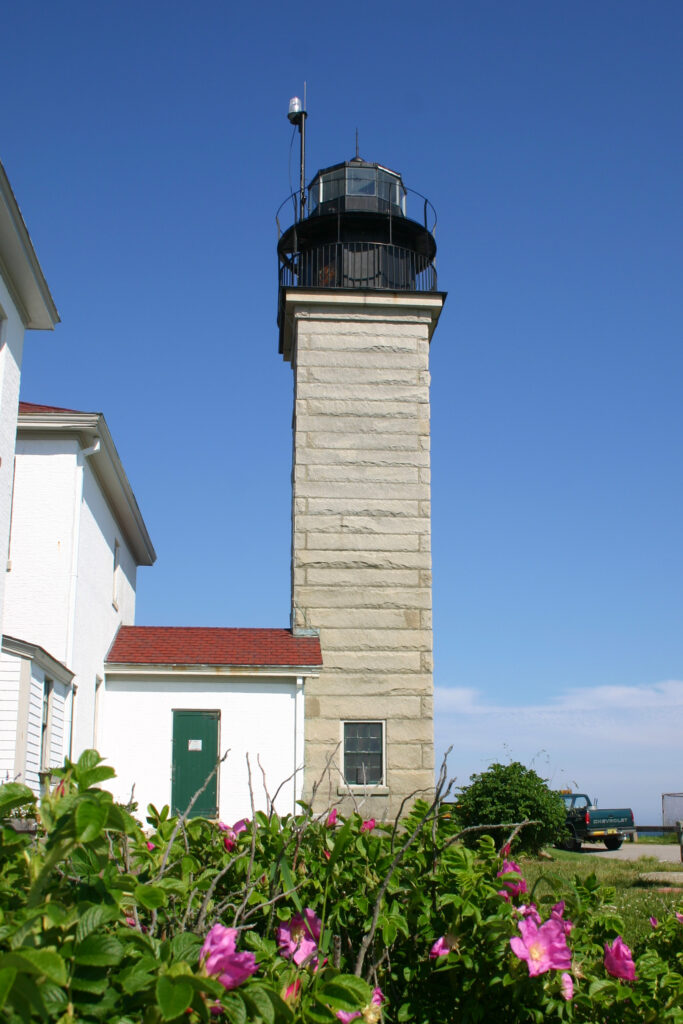
Beavertail, Rhode Island 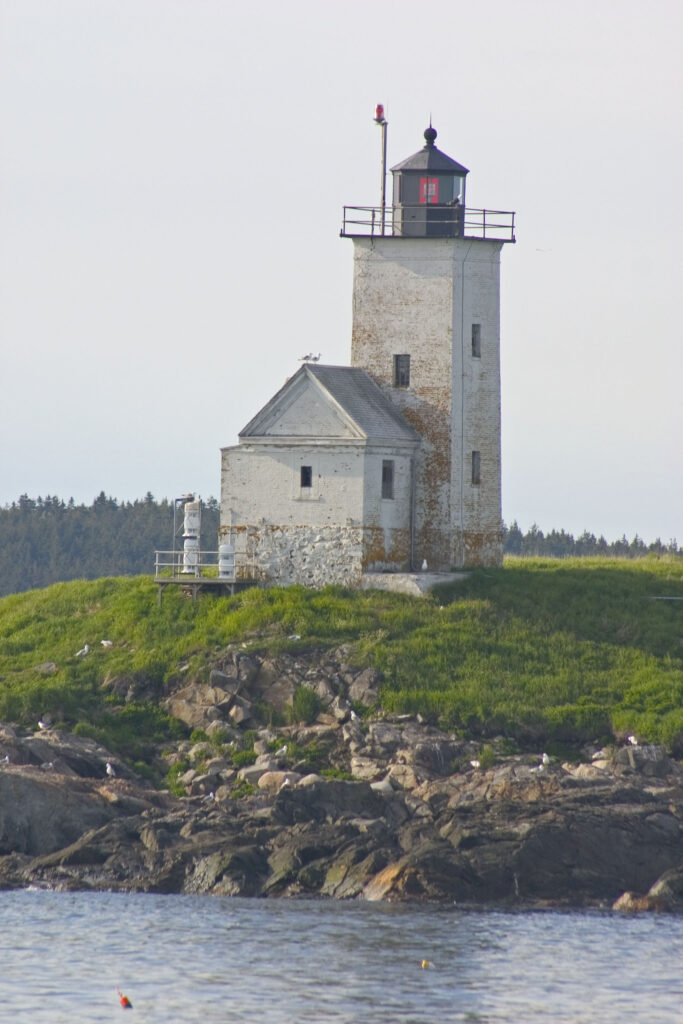
Two Bush Island, Maine 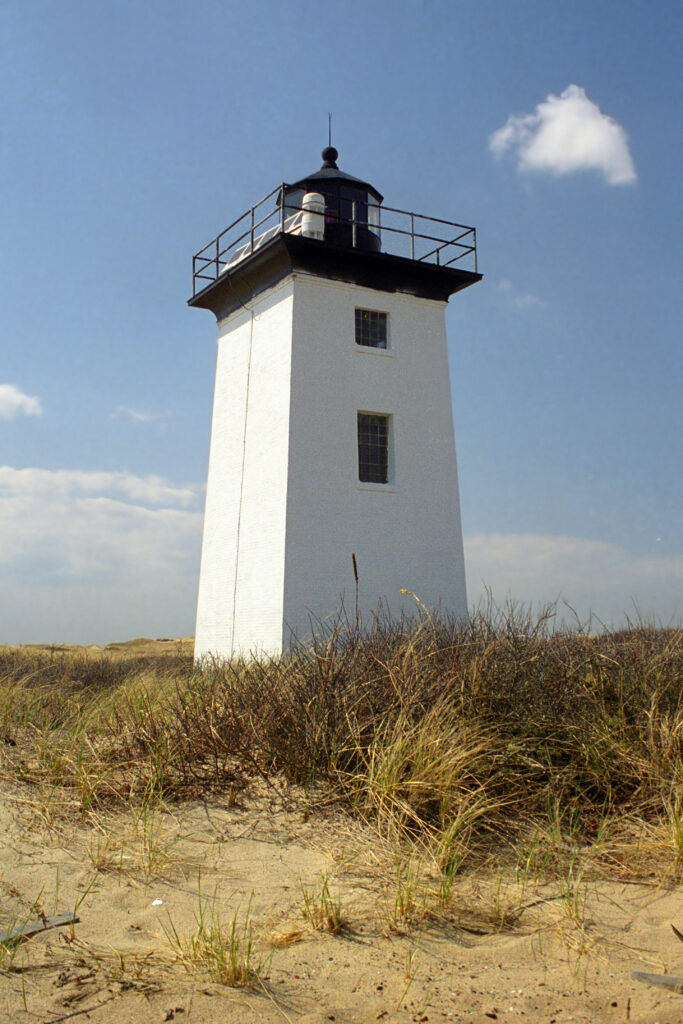
Do you have more to add to this discussion? Please let us know in the comments.
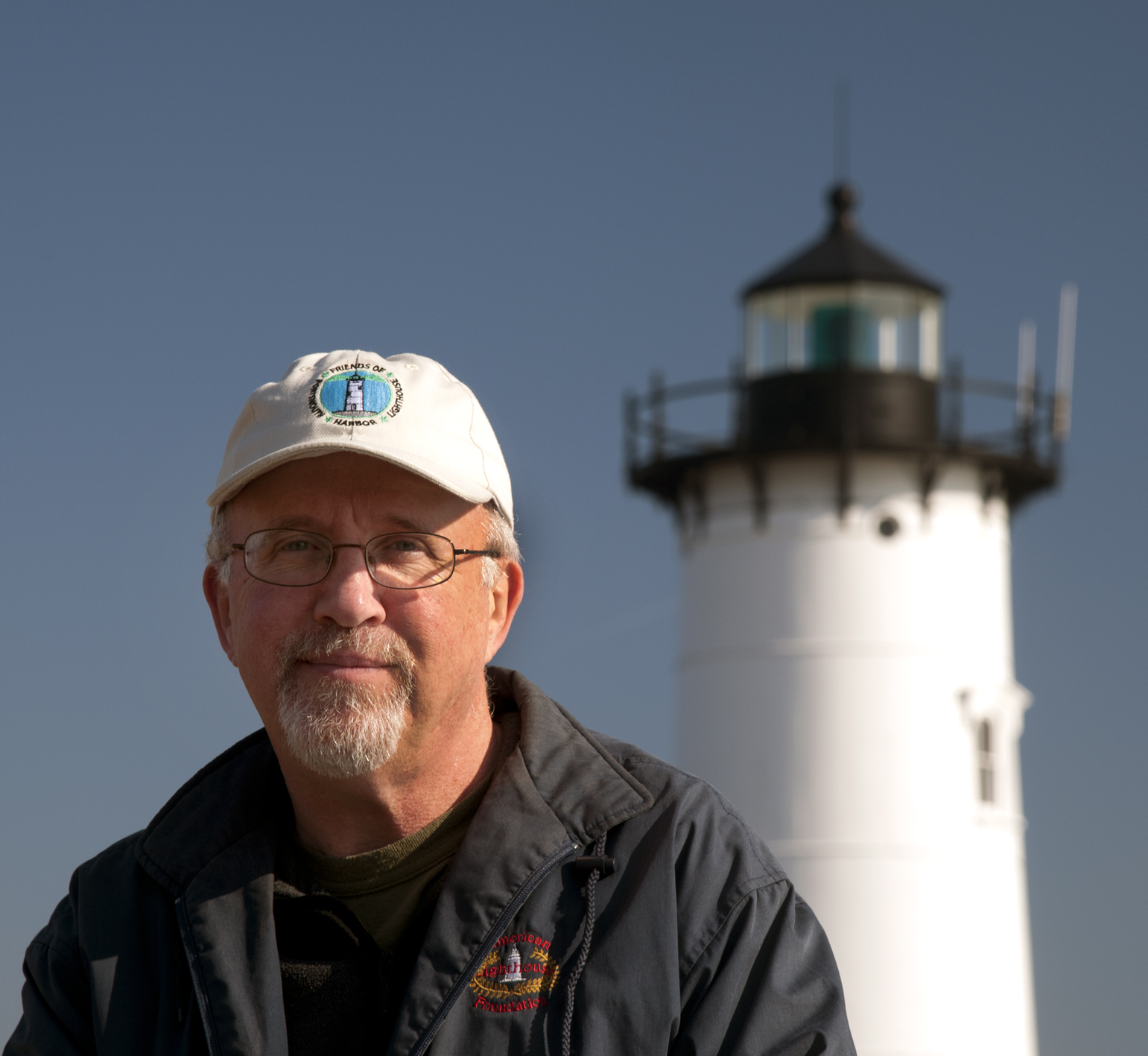
Jeremy D’Entremont is the author of more than 20 books and hundreds of articles on lighthouses and maritime history. He is the president and historian for the American Lighthouse Foundation and founder of Friends of Portsmouth Harbor Lighthouses, and he has lectured and narrated cruises throughout the Northeast and in other regions. He is also the producer and host of the U.S. Lighthouse Society podcast, “Light Hearted.” He can be emailed at Jeremy@uslhs.org


The use of a conical lighthouse design added still another plus for stability. When strong wind hits a conical object it is driven both around and up the cone shape. The cone shape dissipates the force of the wind in two directions further reducing the stress upon the conically shaped lighthouse.
Great point, Tom – thanks!
Living in NJ near the coast & enduring some wicked hurricanes in my life, I’ve always said that if I ever win a big lottery, I’ll build a hurricane proof house. It will be round, the garage will be raised off the ground to the rear not facing the Atlantic ocean, it will have a ramp to drive up the garage so the cars dont get flooded in a storm, damage proof windows and an elevator in addition to fire escapes. It will be CBS or poured concrete. I might even include some nesting perches for shore birds. I’ll let you know when the time comes how it goes. I also have an invention to prevent roofs on regular houses lifting off in a hurricane that I’d like to fabricate. Maybe I’ll bring that one to Shark Tank, I went to high school with Barbara Corcoran. Rode the bus every morning with her.
These sound like good ideas to me! Thanks for your post.